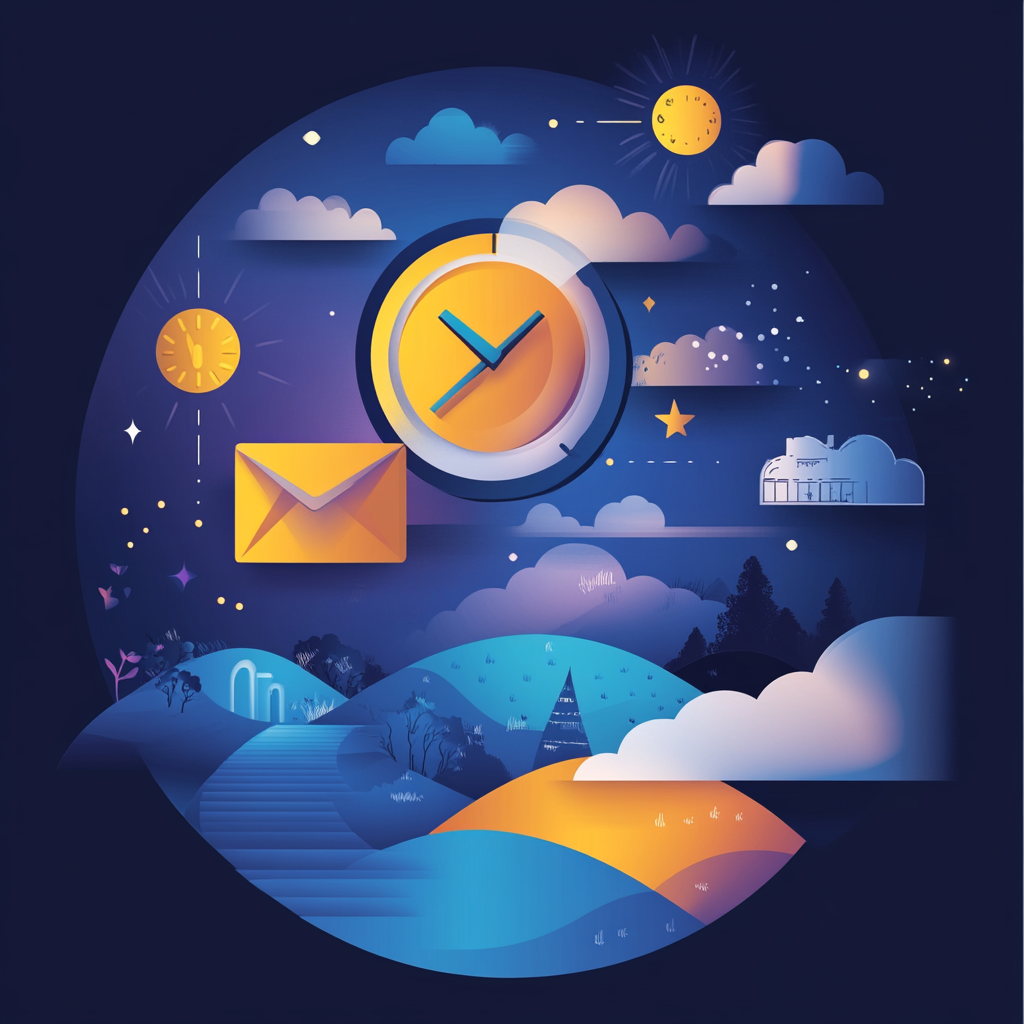In today's digital world, everyone is constantly bombarded with messages vying for their attention. As marketers, finding the optimal time to send an email can make all the difference in whether your message gets read or lost in the noise. But is there really a "best" time to send marketing emails? The answer is more nuanced than you might think.
Timing Isn't Everything—Context Is

It’s easy to assume that there’s a magical time when emails are most effective. However, the reality is that timing depends more on what else is competing for your customer's attention than on the time itself. If your email arrives when someone is in the middle of work, watching their favorite show, or spending time with family, the chances of them engaging with it drop significantly.
In general, you want to avoid sending emails during:
- Work hours: People are usually busy and less likely to engage with marketing content.
- Evenings: Most people are unwinding with entertainment or spending time with family.
- Weekends: People are often focused on leisure activities, making them less inclined to read marketing emails.
So, when should you send emails?
Optimal Time Windows: Early Morning and Lunch Hours
Morning hours, specifically between 8:00 a.m. and 11:00 a.m., tend to be the best for many industries. This is the time when people are getting ready for their day or just starting work, and they’re more likely to scan their inbox. Similarly, lunch hours can be effective, as people may take a break from their busy day and catch up on personal tasks—including checking their email.
Timing Based on Industry

The best time to send an email can vary depending on your specific business and customer base. For example:
- Restaurants: Sending emails in the hour leading up to meal times (like 11:00 a.m. or 5:00 p.m.) can help drive last-minute orders or reservations.
- Nightlife or Entertainment: Emails sent shortly before the end of the workday (around 4:00 p.m.) can be a great way to capture attention as people plan their evening.
The key takeaway is that there's no universal "best" time. It depends on your industry and when your customers are most likely to be receptive.
Experimentation is Key
Given the variety of factors at play, it’s important to experiment. One way to do this is by splitting your email list into groups and sending emails at different times to see which generates the highest engagement. You may find that certain segments of your audience respond better to early morning emails, while others engage more during lunch breaks.
Personalized Timing: The Gold Standard
While testing time windows is a good start, nothing beats understanding the individual schedules of your customers. If your business has data on job activities or other signals that can indicate a customer’s daily routine, use that to tailor your email delivery times. Knowing when a particular customer is most likely to engage can make all the difference in your open and click rates.
Conclusion: Find the Right Time for Your Audience
Ultimately, the best time of day to send marketing emails differs from business to business. While early morning and lunchtime are generally good bets, the real key is to avoid competing with work and leisure activities. A combination of industry-specific insights, experimentation, and personalized scheduling will give you the best chance at reaching your audience when they’re most receptive.
TruAgents offers a cutting-edge ad-tech platform that empowers businesses to create agent-based campaigns, enabling human-like, autonomous, two-way communication with customers. With TruAgents, you can take email marketing beyond timing by delivering deeply personalized interactions.

